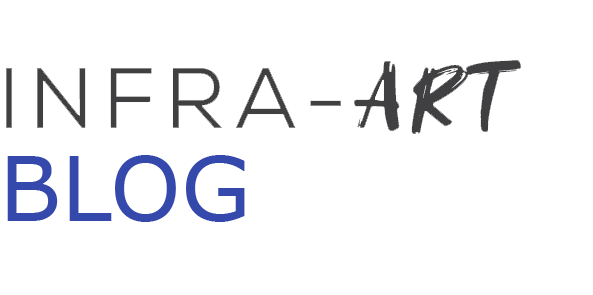by Ioana Maria Cortea — Last updated on November 11, 2025 — Reading time: 10 min
The INFRA-ART FAIR Data Management series examines the principles, governance frameworks, and practical approaches that make research data more FAIR and openly accessible. Each article explores a specific aspect of responsible data stewardship—covering standards, tools, workflows, and real-world implementation experiences—drawing on examples from the INFRA-ART Spectral Library’s FAIR journey. By combining practical guidance with policy context and case studies, the series aims to support researchers, data stewards, and infrastructure developers in adopting best practices for effective, responsible, and sustainable data management.
Article sections
Imagine hundreds of curated, high-quality scientific datasets capturing the unique chemical fingerprints of pigments and other materials found in artworks or archaeological artifacts — all open, yet not machine-actionable. At the INFRA-ART Spectral Library, we faced exactly that: rich, openly available datasets, but with limited interoperability. Without metadata alignment, valuable datasets remained hidden in plain sight — difficult for both researchers and data aggregators to find or reuse. So we asked a simple but powerful question: How can we make our datasets truly FAIR? Our aim was to build bridges across data aggregators and platforms, enabling seamless data discovery and reuse; and, to equip interdisciplinary research communities with a FAIR and TRUST-aligned platform they can rely on.
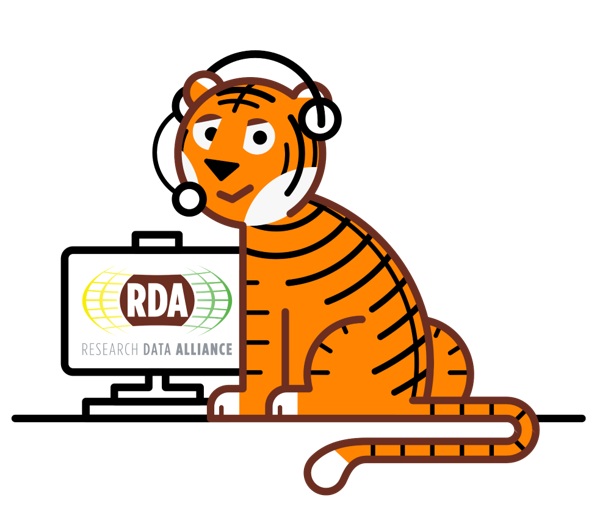
The FAIRMap4ART Project
The FAIRMap4ART project, funded through the RDA TIGER Cascade Grants 2025 Call, aimed to address the lack of semantic interoperability of the existing datasets within the INFRA-ART Spectral Library. The project builds directly on the priorities outlined in the INFRA-ART Interoperability Roadmap, developed earlier in 2025 under the FAIR-IMPACT support action “Creating EOSC-Compliant Interoperability Policies Based on the EOSC Interoperability Framework” (February–April 2025). The core objective of the FAIRMap4ART project was to improve the machine-actionability and discoverability of the existing datasets, ensuring that each spectral collection is described in a structured, machine-readable format that supports automated access, interpretation, and reuse. The project’s objectives aligned with the EOSC Interoperability Framework (EOSC IF), contributing to wider efforts in metadata harmonization, ontology mapping, and FAIR data stewardship. The project was also explicitly designed to implement RDA Working Group recommendations and outputs, with particular emphasis on: Guidance on Data Granularity, and Guidelines for Publishing Structured Metadata on the Web.
From Metadata Gaps to Machine-Actionable Datasets
The first step was to take a critical look at our metadata practices. A structured gap analysis revealed several key challenges. While basic DCAT metadata had been implemented on the INFRA-ART landing page—exposing machine-readable descriptors in line with the RDA Common Descriptive Attributes of Research Data Repositories—this coverage was limited to the repository level and did not extend to individual datasets. There was no structured or semantically enriched metadata at the dataset level, which prevented datasets from being effectively indexed, discovered, or reused in external environments. Internal metadata fields were largely human-readable and unstructured, expressed primarily in free-text form. These descriptors lacked granularity and were not linked to formal semantic resources such as ontologies or controlled vocabularies, making them inaccessible to automated services and limiting their interpretability by third-party tools. In addition, the repository did not expose metadata through standard harvesting protocols (e.g., OAI-PMH) and lacked APIs for external access. As a result, metadata was not indexed by aggregators such as OpenAIRE, limiting visibility within the wider open science landscape.
Key gaps identified at the beginning of the project in relation to semantic interoperability
| Metadata area | Current status | Identified gaps |
| Machine-readable metadata | Basic DCAT metadata implemented on the repository landing page; provides minimal machine-readable descriptors at the top level only | No structured metadata at dataset level (e.g. JSON-LD, schema.org); no object-level descriptions |
| Semantic mappings | No alignment of internal metadata fields with external standards or domain ontologies | No mappings to community ontologies (e.g., CHMO, CIDOC-CRM, IUPAC) |
| Metadata richness | Dataset metadata is limited, mostly expressed as free-text; lacks field depth and semantic typing | Metadata fields focused on human-readable descriptors, lack of granularity or formal semantics |
| Harvestability | Metadata is not exposed via APIs or harvesting protocols; only accessible through the repository interface | No REST APIs or OAI-PMH endpoints; metadata not indexed by OpenAIRE or aggregators |
| FAIRness transparency | FAIR level score of 46% according to F-UJI; with stronger performance in Accessibility, and lower scores in Findability, Interoperability, and Reusability | Moderate FAIR score limits trust and reuse; absence of transparency into machine-actionability |
To address these semantic interoperability gaps, we developed and implemented a gap-driven technical strategy. This included targeted actions to enhance machine-actionability, align metadata with community standards, and enable integration with EOSC infrastructures. Each implementation step corresponded directly to a challenge identified during the gap analysis, ensuring a focused and coherent response. This foundation allowed us to move from broad interoperability goals to concrete, measurable improvements.
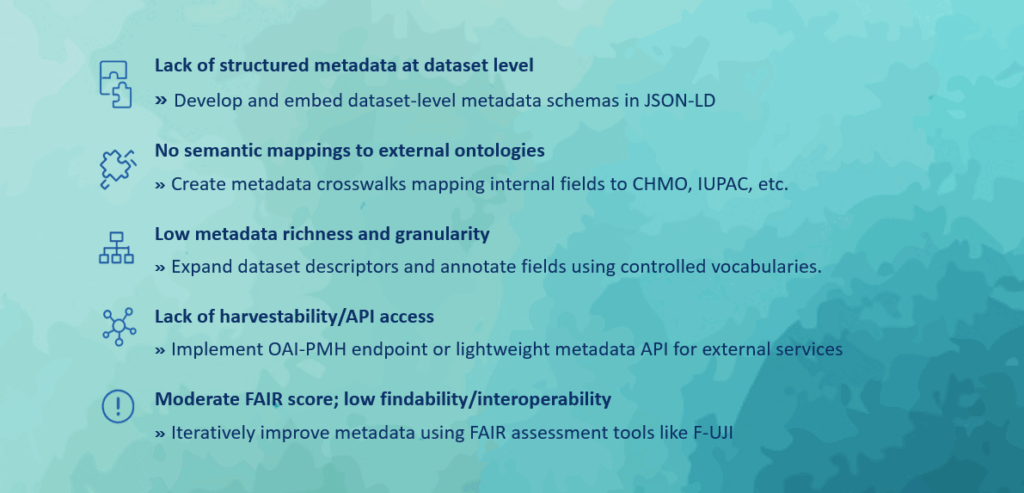
Semantic Artefacts and Ontology Mapping
Using the EOSC Pilot–EDMI metadata set as our reference, we created detailed crosswalks linking every dataset field to its equivalent in Schema.org and DCAT. This ensured that each dataset would be both web-discoverable (via JSON-LD) and harvestable by EOSC-aligned infrastructures.
At the core of this semantic framework is a DataCatalog schema describing the complete INFRA-ART Spectral Library and aggregating the four dataset collections — FTIR, XRF, Raman, and SWIR — through the schema:dataset and dcat:Dataset properties. Each dataset schema inherits and extends these shared properties, ensuring a consistent, hierarchical metadata structure across the entire repository.
INFRA-ART semantic artefacts overview
| Artefact type | Scope/Description | Standard Alignment | File | Description in landing page source code |
| DataCatalog Schema | Describes the complete INFRA-ART Spectral Library, aggregating all dataset collections (FTIR, Raman, XRF, SWIR) and linking them via schema:dataset and dcat:Dataset properties. Includes catalog-level metadata such as title, description, creator, publisher, keywords, and funding information. | Schema.org + DCAT | JSON-LD | RDA Dual Schema – Full Catalogue, Version 1 (August 2025) |
| FTIR Dataset Schema | Describes the ATR-FTIR spectral dataset collection, including measurement techniques, variables measured, file data structure, as well as information on the creator, publisher, keywords, access conditions, etc. | Schema.org + DCAT | JSON-LD | RDA Dual Schema – FTIR Dataset Collection, Version 1 (August 2025) |
| XRF Dataset Schema | Describes the XRF spectral dataset collection, including measurement techniques, variables measured, file data structure, as well as information on the creator, publisher, keywords, access conditions, etc. | Schema.org + DCAT | JSON-LD | RDA Dual Schema – XRF Dataset Collection, Version 1 (August 2025) |
| Raman Dataset Schema | Describes the Raman spectral dataset collection, including measurement techniques, variables measured, file data structure, as well as information on the creator, publisher, keywords, access conditions, etc. | Schema.org + DCAT | JSON-LD | RDA Dual Schema – Raman Dataset Collection, Version 1 (August 2025) |
| SWIR Dataset Schema | Describes the SWIR spectral dataset collection, including measurement techniques, variables measured, file data structure, as well as information on the creator, publisher, keywords, access conditions, etc. | Schema.org + DCAT | JSON-LD | RDA Dual Schema – SWIR Dataset Collection, Version 1 (August 2025) |
For domain-specific enrichment, internal terms were aligned with community-endorsed ontologies and controlled vocabularies: the Chemical Methods Ontology (CHMO) for spectroscopy techniques, the Ontology of Units of Measure (OM) for measurement variables, and the Getty Art & Architecture Thesaurus (AAT) for materials and heritage object terminology. Supplementary ontologies such as FIX, BAO, and MeSH were also integrated to capture additional technical concepts not represented in the primary vocabularies.
In practice, this process transformed the spectral collections into semantically rich, machine-actionable datasets, each carrying structured descriptors for methods, measured variables, provenance, and contextual information — all expressed in a standardized, interoperable format.
To support transparency and reuse, all JSON-LD schemas—identified as RDA dual schemas—are embedded directly within the source code of the INFRA-ART website landing page, providing a single, machine-actionable metadata entry point for all dataset collections that users can easily browse and explore. For full transparency, all crosswalks, ontology mappings, and schema documentation are also openly available via Zenodo. The INFRA-ART team warmly invites community review and feedback to further improve the artefacts’ quality and applicability across domains. Comments, suggestions, or improvement proposals can be shared by contacting infraart@inoe.ro (subject: Feedback on semantic artefacts).
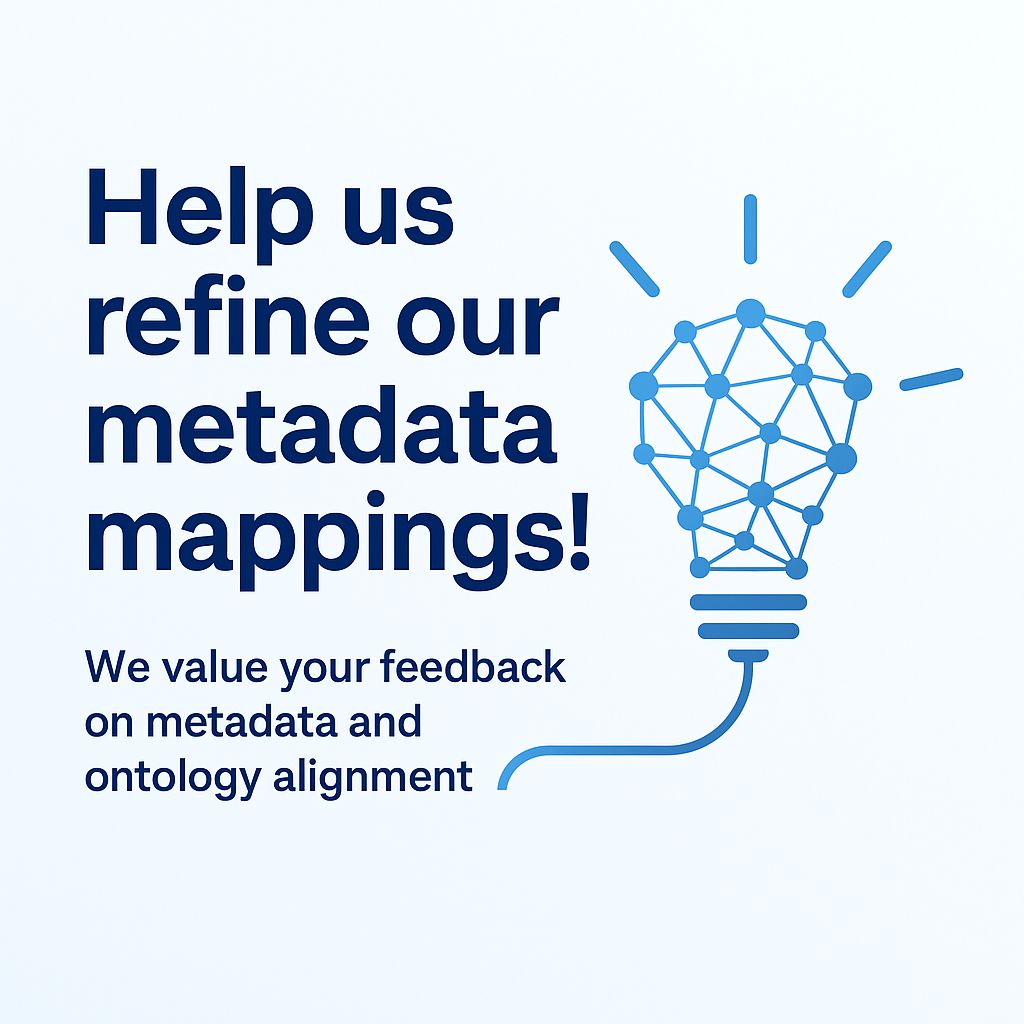
A Measurable Boost in FAIRness
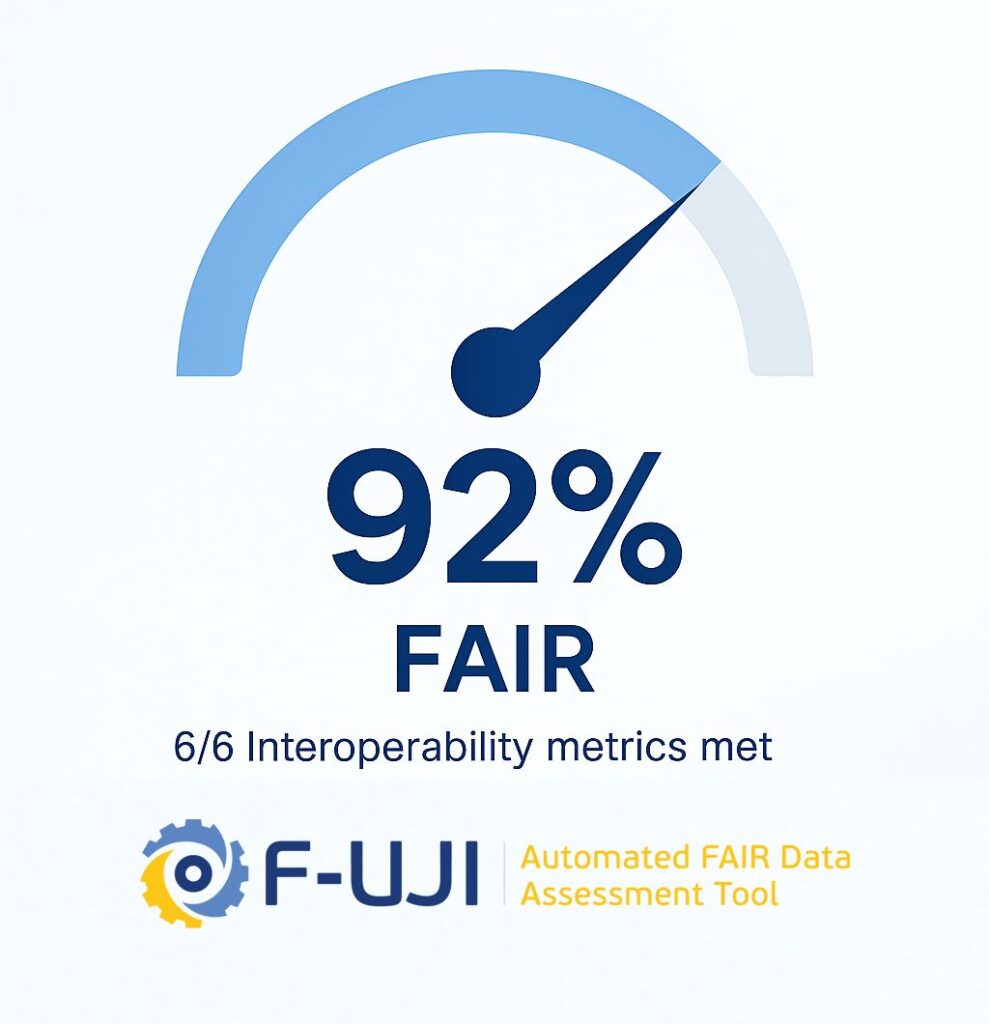
To evaluate the impact of our implementation, we conducted FAIRness assessments using the F-UJI tool. The results showed a significant improvement across all FAIR dimensions. Our overall FAIR score rose from 46% to 92%, with Interoperability scoring 6 out of 6 metrics — a direct result of embedding structured metadata and linking to community vocabularies. For a comprehensive overview, read the full F-UJI report here.
From Technical Implementation to Community Impact
By addressing structural barriers to metadata interoperability, FAIRMap4ART has substantially improved the discoverability, accessibility, and reuse potential of the INFRA-ART spectral datasets, as demonstrated by a measurable increase in the overall FAIR score of the database. These FAIR improvements strengthen integration with EOSC and establish the repository as a more robust, machine-actionable resource within the European research ecosystem. More broadly, the project shows how targeted metadata harmonization—guided by FAIR and RDA recommendations—can accelerate the adoption of interoperable data practices, including in underrepresented research domains such as heritage science, with the potential to inspire other communities to follow similar approaches.
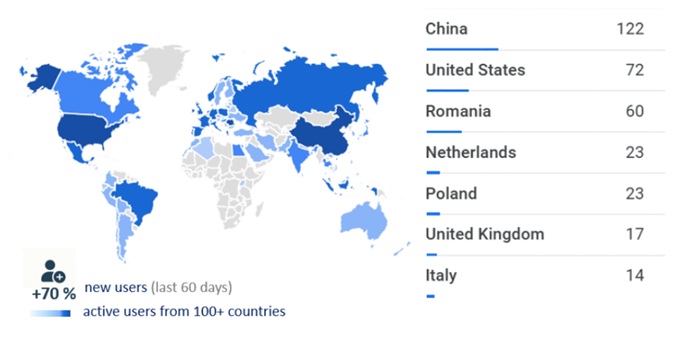
Since the implementation of machine-actionable metadata, the INFRA-ART Spectral Library has shown a clear rise in user engagement. Platform analytics reveal a significant increase in new users and dataset visits, along with more file access requests from researchers in conservation science, material analysis, and other cross-disciplinary fields benefiting from the datasets. Over the past 60 days, following the release of the metadata schemas, the database has recorded a 74% increase in new users (exceeding 500), based on Google Analytics.
Dissemination and Community Engagement
Dissemination has been a key pillar of FAIRMap4ART from the very beginning. Throughout the project, we shared intermediate results through the INFRA-ART Spectral Library LinkedIn page and newsletter, documenting our ongoing FAIR implementation journey.

Several project milestones and lessons learned were presented to the wider research data community, including at International Data Week 2025 in Brisbane during the RDA 25th Plenary poster session — an excellent opportunity to engage directly with data professionals, repository managers, and researchers from around the world. The final project results will be showcased at the first RDA in Europe Annual Summit in Paris, closing the loop between implementation, validation, and community exchange.
These interactions have been invaluable in demonstrating how heritage science can both benefit from and contribute to the broader Open Science and FAIR data ecosystems. FAIRMap4ART has strengthened interoperability within the INFRA-ART data service, deepened alignment with EOSC frameworks, and fostered tangible community impact — embodying a true “community for the community” model that generates circular value.

Next Steps on Our FAIR Journey
The semantic artefacts and documentation developed for the INFRA-ART Spectral Library are openly released under a Creative Commons CC0 1.0 Universal license, ensuring they can be freely reused, adapted, and redistributed without restriction. This openness supports broad adoption across the research, curation, and heritage data communities.
These resources are designed to help researchers, data curators, and repository managers implement FAIR and interoperable metadata practices. By providing ready-to-use examples of Schema.org/DCAT-aligned JSON-LD structures and ontology mappings, the work carried out through FAIRMap4ART aims to accelerate the uptake of semantic interoperability across related infrastructures and repositories.
The documentation and artefacts are conceived as living resources, reviewed and updated periodically to reflect ongoing progress, community feedback, and evolving interoperability standards. Future updates will focus on: iterative improvements to metadata granularity and structure, guided by FAIRness assessments and user feedback, and, secondly, on the development of an API to support machine access and enable seamless integration with OpenAIRE and other EOSC-aligned infrastructures. In the long term, maintaining and enhancing these semantic artefacts will remain a core element of INFRA-ART’s interoperability strategy, ensuring their sustainability, relevance, and continued alignment within the broader FAIR and EOSC ecosystems.
Further reading and resources
- Cortea, I. M. (2025). Semantic Artefact Documentation for the INFRA-ART Spectral Library Datasets and Data Catalog (1.0). Zenodo. https://doi.org/10.5281/zenodo.17570835
- Cortea, I. M. (2025). Advancing Semantic Interoperability in Heritage Science: The FAIRMap4ART Project and the INFRA-ART Spectral Library. RDA in Europe Annual Summit, Paris. Zenodo. https://doi.org/10.5281/zenodo.17569166
- Cortea, I. M. (2025). Metadata That Matters: An RDA-Inspired Approach to FAIR Datasets. International Data Week (IDW2025), Brisbane. Zenodo. https://doi.org/10.5281/zenodo.17521485
- Cortea, I. M. (2025). Interoperability Policy Roadmap for the INFRA-ART Spectral Library. Zenodo. https://doi.org/10.5281/zenodo.15681804
- Cortea, I.M. (2025). Improving the findability, interoperability, and trustworthiness of the INFRA-ART Spectral Library – a dedicated data service for the heritage science domain. Zenodo. https://doi.org/10.5281/zenodo.15756790
- Devaraju, A., and Huber, R. (2025). F-UJI – An Automated FAIR Data Assessment Tool (v3.5.0). Zenodo. https://doi.org/10.5281/zenodo.15118508
- European Commission: Directorate-General for Research and Innovation, EOSC Executive Board, Corcho, O., Eriksson, M., Kurowski, K. et al., EOSC interoperability framework – Report from the EOSC Executive Board Working Groups FAIR and Architecture, Publications Office, 2021. https://data.europa.eu/doi/10.2777/620649
- Jenkyns, R., et al. (2025). Guidance on Data Granularity: Report of the RDA Data Granularity WG (Version 1). Zenodo. https://doi.org/10.15497/RDA00126
- Wu, M., et al. (2021). Guidelines for publishing structured metadata on the web (3.1). Zenodo. https://doi.org/10.15497/RDA00066
- Wu, M., et al. (2024). Ten Principles to Improve Dataset Discoverability (1.0). Research Data Alliance. https://doi.org/10.15497/rda/00120
How to cite this resource
Cortea, I.M. (2025). Strengthening FAIR data practices in heritage science: the FAIRMap4ART implementation story. INFRA-ART Blog.
